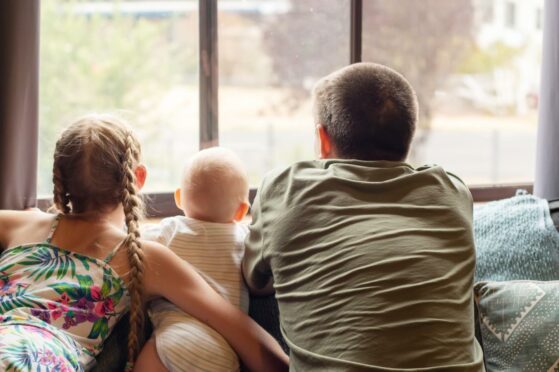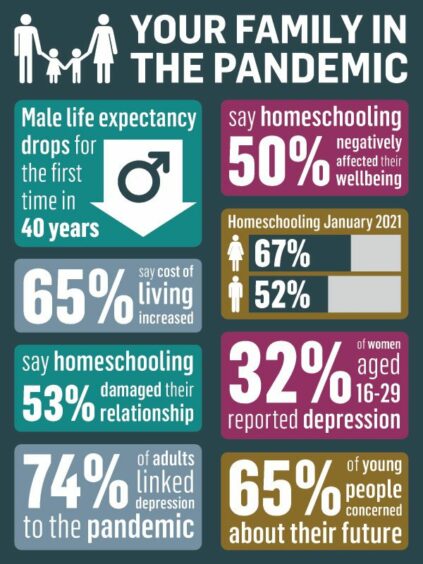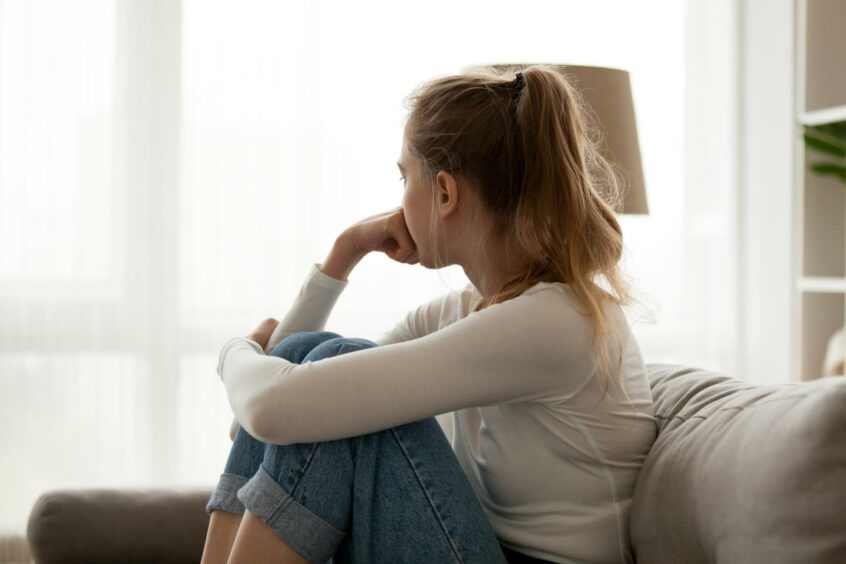Sadly we’ve become used to seeing the daily Covid death toll in the news. But the so-called ‘unseen harms’ are playing out in households across the UK.
For the first time in 40 years, male life expectancy has dropped. Mental health data suggests a surge in depression across the world. Calls to the National Domestic Abuse Helpline increased by 22% in the year ending March 2021.
As we hurtle through this health and social crisis, many families are struggling to cope with the daily stresses.
In an attempt to capture all that, the Office of National Statistics has conducted an opinions and lifestyle survey every week since the start of the pandemic.
While the Covid statistics vary widely depending on the circumstances at that time, they offer a fascinating snapshot of family struggles in 2021.
“For many people, lockdown brought added responsibilities, and it’s clear that homeschooling was particularly challenging for some,” says David Ainslie from the Office for National Statistics.
Home schooling anxiety
Interestingly, people struggled more with home schooling in January 2021 than they did at the beginning of the pandemic.
First of all, there was a slight change in the gender mix. ONS data from 13 January – 7 February 2021 revealed that 67% of women had home schooled in the past seven days, compared with 52% of men. Interestingly, there was an even gender split in April 2020.
However, it’s safe to say that home schooling was a challenge for both mums and dads. Half of survey respondents said the experience had a negative impact on their emotional wellbeing, and 53% said it put a strain on family relationships.
The kids felt the strain too: 38% of parents said their child was struggling with learning from home. The most common cause was a lack of motivation (74%) while nearly half of parents said they didn’t have enough time to support their child.
This is despite 45% of parents having access to school resources – compared with 18% in May 2020.
Fears for the future
In his report analysis in February 2021, Hugh Stickland of the ONS writes:
“While homeschooling seems to be delivered more effectively now than it was last year, with more resources available from schools, it appears to be taking a greater toll on parents and children. Two thirds of parents say it is having a negative impact on their child’s wellbeing – higher than in April last year.”
Indeed, almost two thirds of teenagers aged 16-18 said they were concerned for their future.
Sadly, this feeling translated into depression for a many people. In the summer of 2021 (21 July to 15 August), 17% of people told the ONS they had symptoms of low mood and depression. This was an improvement from the 21% high at the beginning of the year but still far higher than pre-pandemic rates of 10%.
Young women appeared to be particularly affected. Almost a third of women aged 16-29 reported feelings of depression, compared to 20% of young men.
Empty wallets
By the latter half of 2021, a fresh challenge had emerged. With many breadwinners losing their job and the furlough scheme ending, we started to feel the pinch.
In November 2021, six in 10 adults said their cost of living had increased in the last month. The most common reason was the higher cost of food (86%) while around three quarters of people reported paying more for utility bills and petrol/diesel.
This reflects the recent increase in energy bills, with 12-month inflation rates showing an 18.8% rise in electricity and 28.1% for gas.
When the ONS asked adults about their household finances, and specifically how the pandemic had affected their lives in the past seven days, 12% said the pandemic had affected their household finances.
Of these, 35% said their income had reduced, with nearly a third saying they were unable to save as usual.
Only 61% of people said they could afford to pay a one-off, unexpected £850 bill.
Life is changed
Despite these profound challenges, the Covid statistics actually suggest that we’re a resilient bunch.
The latest opinions and lifestyle survey – published on 17 December – brings a surprise. Around 4 in 10 adults say they don’t expect life to return to normal for more than a year – up from 18% in December 2020. Meanwhile, 56% of adults are very or somewhat concerned about the impact of the pandemic on their lives – down from 67% last year.
So it appears that 2021 may have taught us two important things: first, that life isn’t likely to look ‘normal’ again for some time. Second, that we will get through it.
However, these results predate the emergence of the Omicron variant, so the ONS statisticians may have a more gloomy forecast for us as we tiptoe into 2022.


